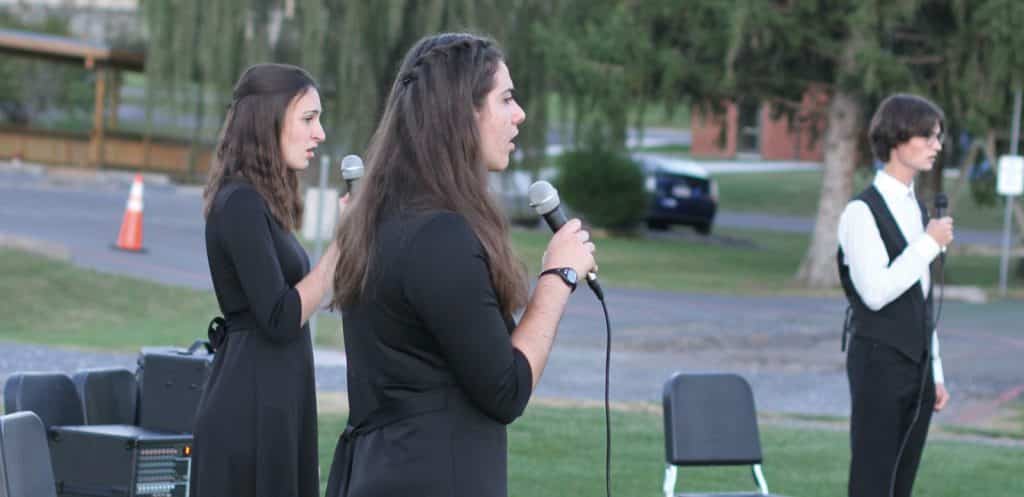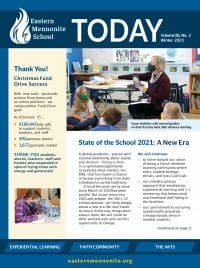One of the sacred traditions that has evolved in the last 10 years, regardless of a global pandemic, is choral singing. Since 1917, singing together has been a key part of community building, worship, and academic excellence at EMS. Changing demographics and changing church practices bring a new era.
“It’s no longer appropriate for me to call out a hymn number in chapel and assume or expect that a critical mass of students will know the song or be familiar with it,” says Jared Stutzman, choral director. “The shared cultural background of hymn-singing and communal singing in EMS’ history was a powerful part of a tight-knit community, but it could also be unhealthy and exclusive for those who didn’t share it.
As our students increasingly come from church backgrounds where hymns aren’t sung or where communal singing isn’t a focal point of worship, we are moving to make our singing more inclusive and accessible,” explains Stutzman. “Singing together will always be a part of who we are, and hymns will always be a part of our heritage and practice. But our approach needed some tweaks,” he says.
EMS music teachers and strategic leadership have confirmed the intention to continue choral singing as an academic, worship, and performance endeavor at EMS. To that end, the middle school curriculum will now include exposure to choral singing and sight reading, building on the strong K-5 music program taught by Joy Anderson. Regular singing in the K-5 weekly gathering, and 6-12 chapel will continue (after COVID), involving student leadership, local guest musicians, and presenting new songs in accessible ways.
Introducing students to communal singing, worship, and choral music at a young age will allow them to understand and enjoy it, regardless of prior experience, teachers believe.
“I’m especially excited about the development of a meaningful vocal music curriculum at the middle school level,” says Stutzman. “The Touring Choir tradition and its life-long impact on students is well-known, and we intend to keep it strong. Building a more inclusive support structure for communal singing in middle and high school is important too.”


